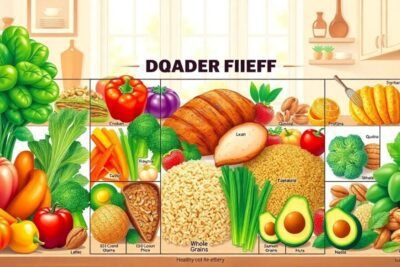
How to lower blood pressure quickly before doctor appointment
High blood pressure can be a significant health concern, especially when you have a doctor’s appointment approaching. Fortunately, there are various effective methods to manage your blood pressure quickly. This article will guide you through practical strategies to help you achieve a healthier reading right before your visit.
By understanding how to lower blood pressure quickly before a doctor appointment, you can ensure your readings are more accurate and reflect your true health status. Here’s a closer look at some effective techniques.
- What are effective ways to lower blood pressure before a doctor appointment?
- How can I use home remedies to lower blood pressure instantly?
- What relaxation techniques help to lower blood pressure quickly?
- How does white coat syndrome affect blood pressure readings?
- What foods can help lower blood pressure fast?
- How to properly measure blood pressure to avoid misdiagnosis?
- Related Questions About Blood Pressure Management
What are effective ways to lower blood pressure before a doctor appointment?
When preparing for a doctor’s appointment, managing your blood pressure effectively is crucial. Here are some simple methods you can adopt:
- Deep Breathing: Take a few minutes to practice deep breathing exercises. This can help calm your nerves and lower your blood pressure.
- Hydration: Drink a glass of water, as dehydration can sometimes elevate blood pressure.
- Limit Caffeine: Avoid caffeine before your appointment, as it can temporarily increase your blood pressure.
- Rest: Ensure you sit quietly for at least five minutes before the reading to allow your body to settle.
Incorporating these strategies can lead to more accurate blood pressure readings and reduce anxiety associated with your visit.
How can I use home remedies to lower blood pressure instantly?
Home remedies can be an excellent way to manage your blood pressure naturally before a doctor’s appointment. Consider the following:
- Garlic: Consuming garlic can help lower blood pressure due to its natural properties.
- Omega-3 Fatty Acids: Foods rich in omega-3, such as fish and flaxseed, can promote heart health.
- Dark Chocolate: A small amount of dark chocolate may help improve blood flow and lower blood pressure.
These remedies can fit seamlessly into your routine and provide benefits beyond just temporary relief. Remember to consult your healthcare provider to ensure compatibility with your treatment plan.
What relaxation techniques help to lower blood pressure quickly?
Relaxation techniques are vital for managing blood pressure effectively. Here are several methods to consider:
- Meditation: Spend a few minutes meditating to clear your mind and reduce stress levels.
- Progressive Muscle Relaxation: This technique involves tensing and relaxing different muscle groups to alleviate tension.
- Yoga: Gentle yoga can enhance flexibility and promote relaxation, leading to lower blood pressure.
Incorporating these techniques not only helps in reducing blood pressure but also improves overall well-being.
How does white coat syndrome affect blood pressure readings?
White coat syndrome refers to the anxiety some people feel during medical visits, which can lead to elevated blood pressure readings. This phenomenon affects nearly 20% of individuals, making it essential to address it before your appointment.
Understanding the impact of this syndrome can help you manage your anxiety. Being aware of your feelings can lead to better preparation and relaxation before having your blood pressure taken.
Practicing stress-reducing techniques, as mentioned earlier, can help mitigate the effects of white coat syndrome and yield more accurate readings.
What foods can help lower blood pressure fast?
Certain foods are known for their ability to help lower blood pressure effectively. Consider including the following in your diet:
- Berries: Rich in antioxidants, they can help manage blood pressure levels.
- Beets: High in nitrates, they can improve blood flow and reduce blood pressure.
- Leafy Greens: Foods like spinach and kale are loaded with potassium, which can help balance sodium levels.
Incorporating these foods into your meals leading up to your appointment can provide an immediate impact.
How to properly measure blood pressure to avoid misdiagnosis?
Accurate blood pressure measurement is crucial for proper diagnosis and treatment. To ensure accuracy:
- Correct Positioning: Sit with your back straight and supported, feet flat on the floor, and arm at heart level.
- Be Relaxed: Avoid talking and remain calm during the measurement.
- Timing: Measure your blood pressure at the same time each day for consistency.
By following these guidelines, you can help ensure that your blood pressure readings are as accurate as possible, allowing your healthcare provider to make informed decisions.
How do you lower your blood pressure before going to the doctor?
To lower your blood pressure before a doctor’s appointment, engage in relaxation techniques such as deep breathing or meditation. Additionally, consider making dietary adjustments, such as increasing your intake of fruits and vegetables while reducing processed foods. Staying hydrated and maintaining a calm environment can also contribute to better readings.
How do I get my blood pressure down ASAP?
If you need to lower your blood pressure quickly, try taking a moment to breathe deeply and relax your body. Engaging in light physical activity, such as walking, can also help. Consume a small snack that includes potassium-rich foods, like bananas or avocados, to help regulate levels.
How can I lower my blood pressure quickly before a test?
Before a blood pressure test, focus on calming your mind and body. Practice deep breathing exercises for several minutes prior to the test. Additionally, ensure you’re seated comfortably and avoid caffeine or high-sodium snacks in the hours leading up to your appointment.
How do I get my blood pressure down in a hurry?
To quickly reduce your blood pressure, use techniques like drinking water, taking slow, deep breaths, or consuming foods high in potassium. Engaging in a brief walk or light stretching can also help alleviate tension and promote better circulation.










